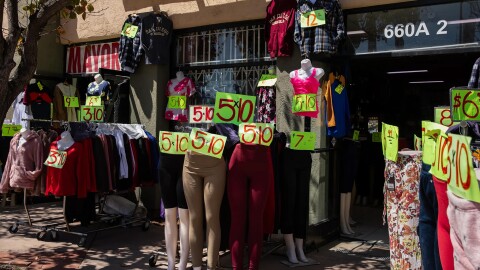“It smells like shit out here,” a Border Patrol agent said early Friday morning as he stepped off a bus. The bus was dropping hundreds of migrants off at San Ysidro’s Iris Transit Center.
Customs and Border Protection (CBP) has used the trolley stop to release thousands of migrants onto the streets of San Diego ever since the county’s migrant transit center shut down on Feb. 22.
It’s close enough to the Tijuana River that you can smell cross-border sewage, which is likely what the Border Patrol agent was complaining about.
He was the closest thing migrants got to an official welcome to San Diego that morning. There were no representatives from the state, county, or local government.
Instead, migrants were greeted by a handful of vendors offering their services. A woman selling coffee and donuts, cab drivers offering a ride to the airport for $75, a man selling cell phone SIM cards for $35. And one lone volunteer trying to help.
A coalition of mutual aid organizations and local nonprofits ensure there is at least one volunteer to welcome migrants into San Diego every day. The volunteer that Friday was a woman named Catalina. Volunteers don’t like giving their last names because they fear being harassed by anti-immigrant groups.
“(Staff) are there at 7 o’clock in the morning to meet those first buses and they are often there past 8 o’clock at night to make sure that the last folks get to where they need to be,” said Lindsay Toczylowski, co-founder and executive director of Immigrant Defenders Law Center.
And, with zero funding from the city or county of San Diego, she added.
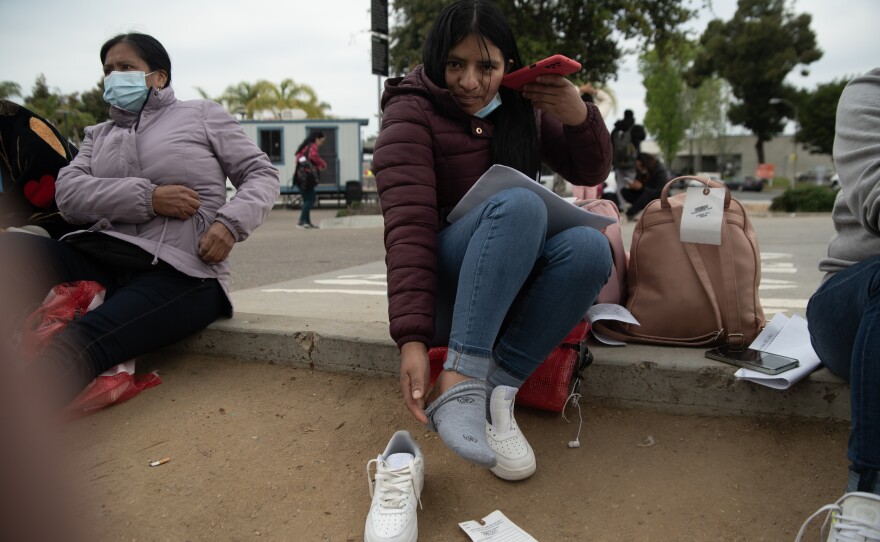
More than 90% of migrants being dropped off in San Diego don’t plan to stay here. They have friends and relatives in other parts of the country. Their most pressing need is help finalizing travel arrangements.
Catalina’s job is to welcome them to San Diego, and help them get to wherever they need to go.
“Unfortunately, there are no resources for you here,” Catalina told the migrants. “There are no restrooms, no shelter, no Wi-Fi or anywhere to charge your phones.”
She told them San Diego International Airport is their best bet. The airport has restrooms, Wi-Fi and they can purchase flights out of San Diego there. She said staying at the Iris Avenue Transit Center is not a good long-term option.
“You are very vulnerable out here in the street,” she said.
Immigrant rights activists responding to the migrant drop offs are frustrated by the lack of support from all levels of government.
“We’re not seeing direct coordination with the county or city of San Diego,” said Pedro Rios with American Friends Service Committee. “We’re not even seeing communication of how they might offer support.”
Rios believes local governments have a responsibility to step up, particularly because of San Diego’s history as a welcoming place to immigrants.
“These are people who find themselves in a vulnerable situation,” he said. “They’ve traveled through traumatizing and horrendous conditions. To then arrive to the U.S. and not have any type of welcoming by county officials or local officials is unacceptable.”
San Diego Mayor Todd Gloria declined to comment.
County spokesperson Michael Workman said staff are “working very hard to determine the best roadmap going forward.” He said while staff have made some progress, there is nothing to report yet.
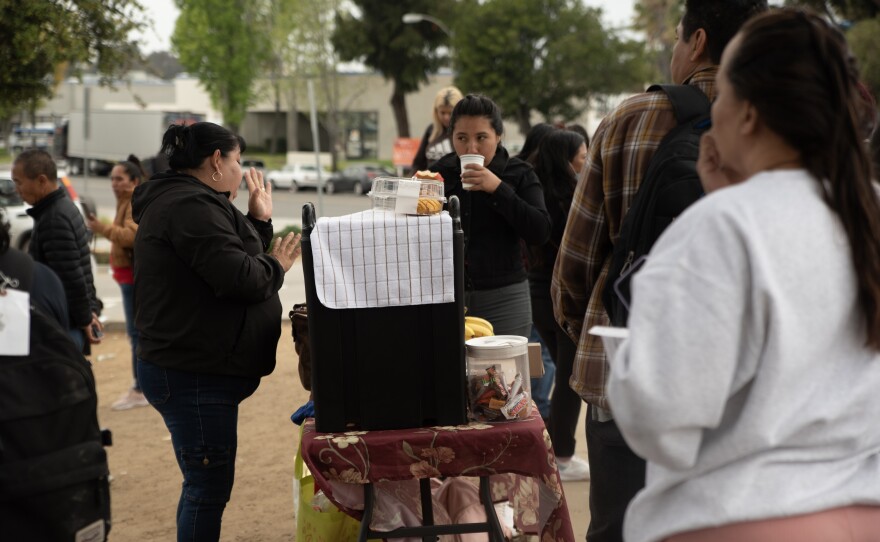
There are signs of hope. Earlier this month, the San Diego region was given nearly $40 million from the federal government’s Shelter and Services Program to help the migrant population. The money is split in half between San Diego County and Catholic Charities of San Diego, an organization that has run a migrant shelter in San Diego for years.
Advocates welcomed this influx of funding to the region.
“This federal allocation is really a victory for our region,” said Kate Clark, senior director of immigration services at Jewish Family Service. “I believe it represents a $10 million increase to what we saw last year.”
Now that the money has been awarded, advocates want to see a collaborative approach between all levels of government and local service providers to come up with a lasting migrant welcome program.
“We all have the opportunity to be a part of the solution,” Clark said.
Jewish Family Service, for example, has run a migrant shelter for five years. During that time, they welcomed more than 200,000 migrants into San Diego and roughly 98% of them moved on to other final destinations throughout the United States.
Local service providers who have been helping migrants since the county’s migrant transit center closed two months ago are eager to work with all levels of government, Toczylowski said.
“This is something that can be managed,” she said. “But it requires collaboration between those doing the work and local elected officials.”
Local service providers have helped more than 33,000 migrants traveling through San Diego since Feb. 22, she added.
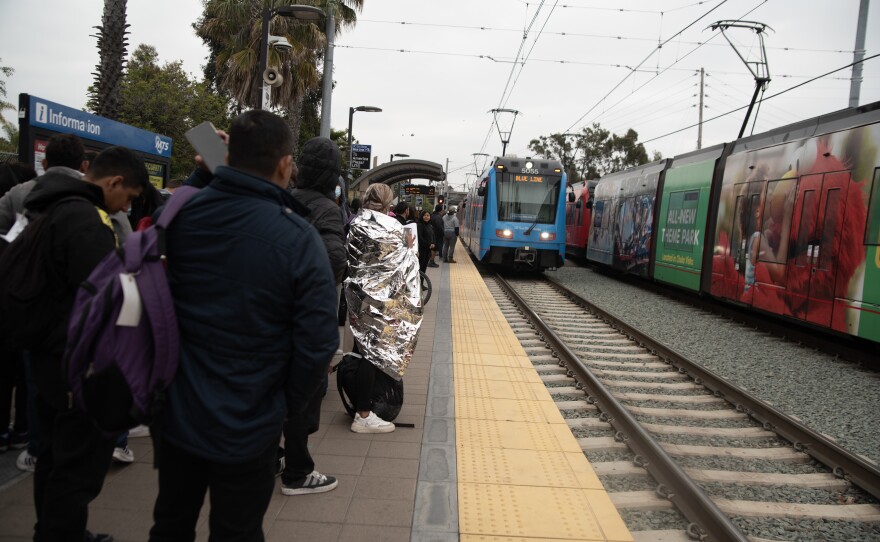
Advocates believe that San Diego County should lean on the experience of the organizations that have been doing this work with very little funding.
But that collaboration could be off to a rocky start.
It has been nearly two weeks since San Diego County was awarded the $19.6 million and advocates said no one from the county has reached out.
“It’s been radio silence,” Toczylowski said.
County Supervisor Nora Vargas’ spokesperson Meghan Breen said Vargas would like some of the money to go toward opening another migrant transit center.
“The Chairwoman plans to allocate the funding toward the Transition Center, however, there is no official determination that I can share at this time,” Breen wrote in an email.
Breen did not comment on criticisms about the county’s lack of coordination with local service providers.
This lack of leadership from local officials sends the wrong message, Rios said.
“I think the message is one of ignoring the situation,” he said.
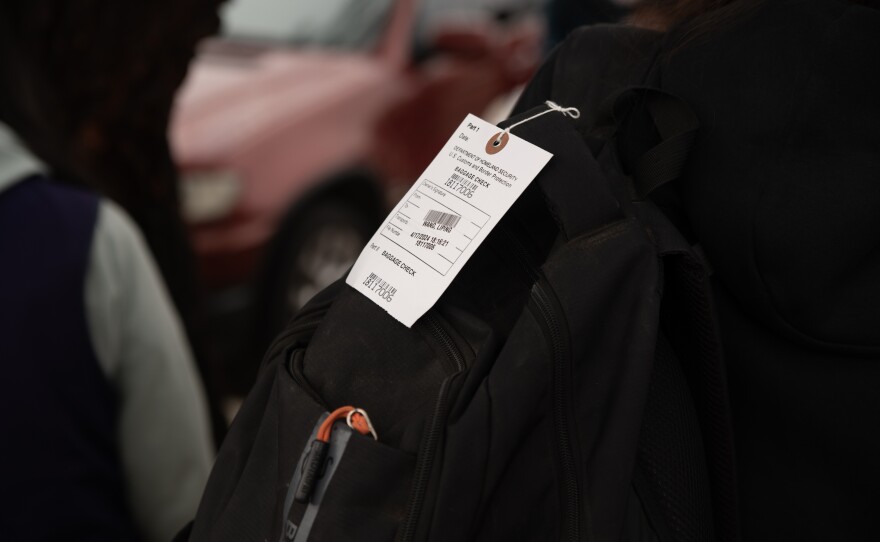
-
Billions in tax dollars are pouring into efforts to reduce the U.S.-Mexico border wait times, yet excessive delays continue. Local leaders say small businesses are struggling in border communities.
-
When the U.S. government began tearing down the old border wall to build a new one, artists and advocates feared they were losing a slice of history.



